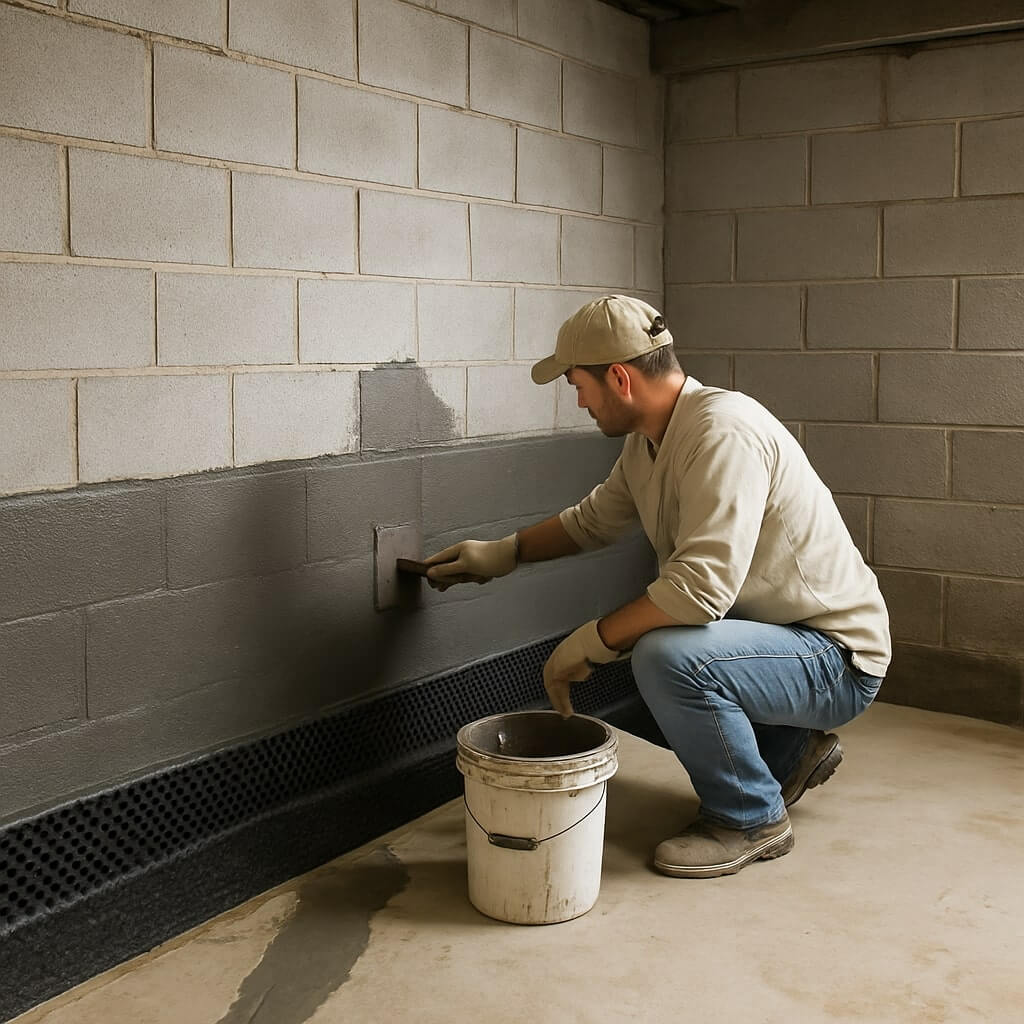When it comes to waterproofing your basement without relying on a sump pump, it’s essential to take a systematic approach. Start by identifying and sealing cracks in your walls and floors, as even small openings can let in water. Then, consider applying waterproof coatings and sealants for added protection. But that’s just the beginning; effective exterior drainage plays a significant role, too. Let’s explore these techniques further to guarantee your basement stays dry and well-maintained.
Key Takeaways
- Inspect and seal cracks in walls and floors using appropriate sealants like flexible caulk or epoxy for larger gaps.
- Apply waterproof membranes and liquid sealants to create protective layers on basement walls and floors.
- Improve exterior drainage by redirecting downspouts and ensuring gutters are clean to prevent water pooling around the foundation.
- Implement landscape grading to slope soil away from the foundation, promoting effective water diversion.
- Enhance ventilation and airflow with exhaust fans and dehumidifiers to control moisture and reduce humidity levels.
Identifying and Sealing Cracks in Walls and Floors
To effectively waterproof your basement, the first step is identifying and sealing any cracks in the walls and floors.
Begin by inspecting your basement for visible cracks; use a flashlight to spot smaller ones. Take note of their size and location, as this will help determine the appropriate sealing methods.
For hairline cracks, a flexible caulk works well, while larger cracks may require epoxy or polyurethane foam.
Verify the surfaces are clean and dry before applying any sealant.
Applying Waterproof Coatings and Sealants
Waterproof coatings and sealants are essential tools in your basement waterproofing arsenal. They create a barrier against moisture intrusion, protecting your space effectively.
Here’s what you need to know:
- Waterproof membranes: These provide a protective layer over walls and floors.
- Liquid sealants: Ideal for filling cracks and joints.
- Cementitious coatings: Great for porous surfaces.
- Acrylic sealants: Flexible and suitable for various surfaces.
- Epoxy sealants: Durable and resistant to water.
Choose the right sealant types based on your specific needs, and apply them carefully for the best protection against moisture.
Improving Exterior Drainage Systems
Making certain your basement stays dry extends beyond applying waterproof coatings and sealants; it also involves enhancing your exterior drainage systems.
Start by evaluating your current drainage solutions. Redirect downspouts away from your foundation and make sure gutters are clean and functional. Consider installing French drains or drainage tiles to effectively channel water away.
Additionally, use landscape barriers to divert surface water away from your home. These barriers can be natural or man-made, helping create a slope that directs water flow.
Enhancing Ventilation and Airflow
While many homeowners focus on preventing water intrusion through structural measures, enhancing ventilation and airflow in your basement is equally essential for maintaining a dry environment.
Proper ventilation systems can help reduce humidity and prevent mold growth. Here are some effective airflow techniques you can implement:
- Install exhaust fans to promote air circulation.
- Use dehumidifiers to control moisture levels.
- Open windows when weather permits to allow fresh air in.
- Seal any air leaks to maintain consistent airflow.
- Consider adding vents or ducts for better air distribution.
Using Landscape Grading to Divert Water
When it comes to protecting your basement from water intrusion, landscape grading plays an essential role in redirecting rainfall away from your foundation. By adjusting landscape elevation around your home, you create a slope that encourages water to flow away, rather than pooling near your foundation.
Aim for a grade of at least 2% away from the house. Additionally, consider existing drainage patterns; guarantee that downspouts direct water into these patterns to maximize effectiveness.
You might also plant vegetation that helps absorb excess moisture. Proper grading not only shields your basement but also enhances your yard’s overall drainage efficiency.
Conclusion
By implementing these effective waterproofing techniques, you can safeguard your basement from moisture issues without relying on a sump pump. Start by sealing cracks, applying waterproof coatings, and improving your exterior drainage. Don’t forget to enhance ventilation to keep humidity at bay. Finally, use landscape grading to direct water away from your foundation. Taking these proactive steps will help maintain a dry, healthy basement environment, ensuring your home stays protected for years to come.

